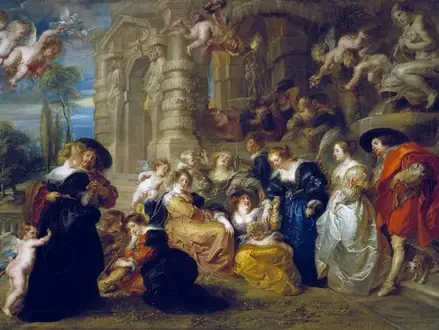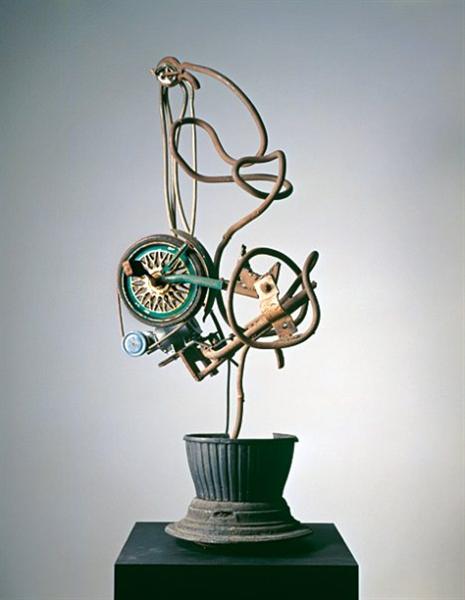Title of Artwork: “Garden of Love”

Artwork by Peter Paul Rubens
Year Created 1633
Summary of Garden of Love
Prado Museum in Madrid houses a Rubens painting called The Garden of Love, which was completed in 1633 and is now on display. At the time of its first listing, the piece was hung in Madrid’s Royal Palace, where it belonged to the Spanish king. The Garden Party was the original name given to the painting in early inventories.
All About Garden of Love
It is the pinnacle of the Merry Company genre of outdoor courtly painting. Exaggerated movement and easily interpreted detail were common in Baroque paintings to create drama, tension, and grandeur. In his paintings, Rubens employs multiple layers of allegory and symbolism.
Picnicking in an idyllic garden, a large group of well-dressed people from the 17th century can be seen in this 6.5-foot by 9.4-foot painting. Everyone is dressed to impress, displaying their status and wealth. An example of how a full court scene can be shown off at the end of the match Individuals and Cupids interact to bring mythological characters into a realistic garden scene to create a fantastical painting..
The cupids, a pair of doves, flower crowns, music, and Juno’s peacock are all symbols of matrimonial love that can be found in the group. The dogs are a symbol of fidelity and devotion to one’s master or mastery. The garden is both a symbol of paradise and a place of rebirth. In this painting, love and marriage are celebrated, as well as the company of friends and family.
A man in a black suit and tie leads a woman in all-black to the group in the far left corner. In the early stages of this painting’s identification as a self-portrait with friends, the man depicted in the painting is believed to be Rubens. His marriage to Rubens’ wife, Hélène Fourment, is commemorated in the Garden of Love.
Rubens’ second wife, Helena Fourment, served as his mistress. Rubens painted several portraits of her and used her as a model for religious and mythological works.
Happiness in marriage is symbolised by the fountains of the Three Graces and Venus. Rubenesque nude females, the Three Graces fountains are all three of these things. The garden scene is reflected in these forms, which emphasise fertility and physical beauty. The fountain is spraying an unsuspecting group of people right below the Graces. The second fountain also features a naked woman, but this time Venus is depicted as sitting on the back of a fish and shooting water out of her breasts in a fountain of milk. The Nursing Venus is a depiction of the goddess of childbirth and nurturing.
The peacock identifies this full-figured woman as Juno, the goddess of marriage. Rubens uses familiar themes that his contemporary audience would recognise in order to engage with his audience.
His own house in Antwerp serves as a setting for the Renaissance sculptures that Rubens incorporates into his work.
A Baroque Flemish artist, Adriaen Brouwer, was a major influence on Rubens’ merry company, which was painted in a highly realistic style. Only 60 of Brouwer’s paintings have been discovered, but his influence can be seen in the work of the following generations of Flemish and Dutch genre painters. It is possible to see the influence of Brouwer’s style on Rubens’ painting in his atmospheric landscapes painted with loose brushstrokes.
Information Citations
En.wikipedia.org, https://en.wikipedia.org/.

























